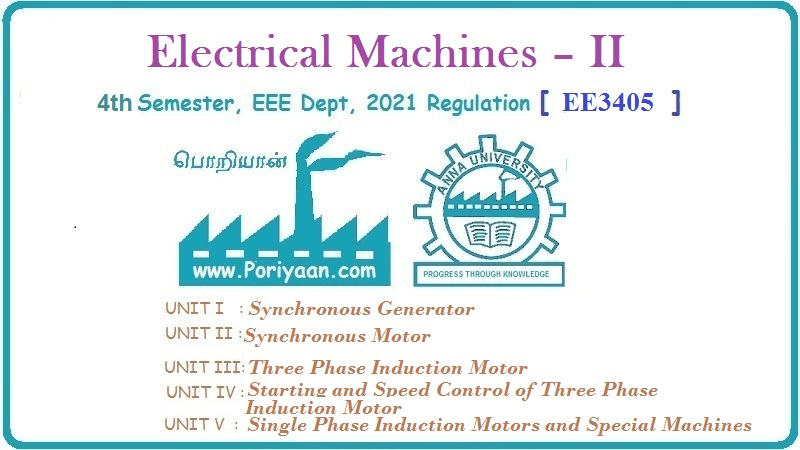Electrical Machines II: UNIT V: b. Special Machines
D.C. Servomotor
Construction, Working Principle, Torque-speed Characteristics, Applications
Basically d.c. servomotor is more or less same as normal d.c.motor. There are some minor differences between the two.
D.C. Servomotor
Basically
d.c. servomotor is more or less same as normal d.c.motor. There are some minor
differences between the two. All d.c. servomotors are essentially separately
excited type. This ensures linear torque-speed characteristics.
The
control of d.c. servomotor can be from field side or from armature side.
Depending upon this, these are classified as field controlled d.c. servomotor
and armature controlled d.c. servomotor.
1. Field Controlled D.C. Servomotor
In
this motor, the controlled signal obtained from the servoamplifier is applied
to the field winding. With the help of constant current source, the armature
current is maintained constant. The arrangement is shown in the Fig. 9.9.1.

This
type of motor has large Lf/Rf ratio where Lf
is reactance and Rf is resistance of field winding. Due to this the
time constant of the motor is high. This means it can not give rapid response
to the quick changing control signals hence this is uncommon in practice.
a.
Features of Field Controlled D.C. Servomotor
It
has following features :
i)
Preferred for small rated motors.
ii)
It has large time constant.
iii)
It is open loop system. This means any change in output has no effect on the
input.
iv)
Control circuit is simple to design.
2. Armature Controlled D.C. Servomotor
In
this type of motor, the input voltage 'Va' iS applied to the
armature with a resistance of Ra and inductance La. The field winding is supplied
with constant current If. Thus armature input voltage controls the
motor shaft output. The arrangement is shown in the Fig. 9.9.2.

The
constant field can be supplied with the help of parmanent magnets. In such case
no field coils are necessary.
a.
Features of Armature Controlled D.C. Servomotor
It
has following features :
i)
Suitable for large rated motors.
ii)
It has small time constant hence its response is fast to the control signal.
iii)
It is closed loop system.
iv)
The back e.m.f. provides internal damping which makes motor operation more
stable.
v)
The efficiency and overall performance is better than field controlled motor.
As
the armature controlled d.c. servomotor is closed loop system, in comparison
with open loop field controlled system, generally armature controlled motors
are used.
3. Characteristics of D.C. Servomotors
The
torque-speed characteristics of a d.c. motor basically describe the static
torque producing capability of the motor with respect to the applied voltage
and motor speed.
The
effect of armature inductance is negligible in the steady state and hence the
torque equation for a d.c. servomotor can be written as

From
the above equation (9.9.1), it can be seen that the graph of Tm against rom is
a straight line which is dropping in nature, for constant value of Va- This
line represents torque-speed characteristics of a d.c. servomotor, for constant
Va.
The
Fig. 9.9.3 shows a typical set of torque-speed characteristics for various
values of applied voltage.

The
slope of the characteristics can be obtained from the equation (9.9.1), which
is expressed as,
The
slope of such characteristics is negative.
The
torque-speed characteristics of d.c. servomotors are determined experiementally
in practice, by conducting various tests on the servomotor.
a.
Other Performance Characteristics
The
performance characteristics other than the torque-speed characteristics of a
d.c. servomotor are shown in the Fig. 9.9.4.

As
torque developed increases, the current and power input increases while the
efficiency increases upto certain limit and then starts decreasing.
4. Applications of D.C. Servomotor
These
are widely used in air craft control systems, electromechanical actuators,
process controllers, robotics, machine tools etc.
Review Question
1. Write a note on d.c. servomotors.
Electrical Machines II: UNIT V: b. Special Machines : Tag: Engineering Electrical Machines - II : Construction, Working Principle, Torque-speed Characteristics, Applications - D.C. Servomotor
Related Topics
Related Subjects
Electrical Machines II
EE3405 Machine 2 EM 2 4th Semester EEE Dept | 2021 Regulation | 4th Semester EEE Dept 2021 Regulation
